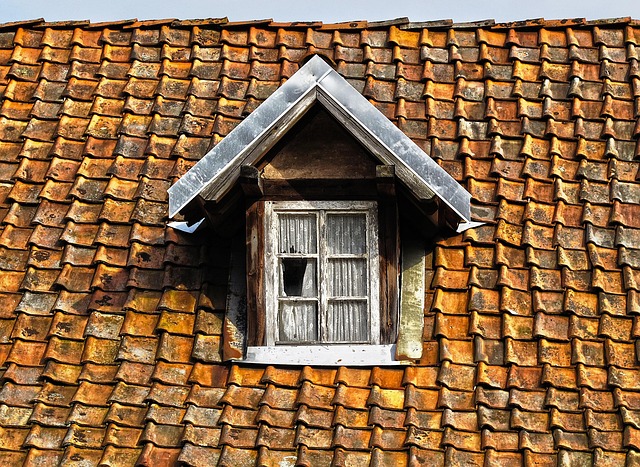Energy-efficient roof designs, or "cool roofs," utilize high solar reflectance materials and coatings to reduce interior temperatures, cut cooling costs, lower carbon footprints, and extend roofing lifespans. Popular cool roof types include reflective white roofs, green roofs, lightweight foam roofs, ceramic tiles, and metal reflectives. Strategic material selection, proper installation techniques, and advanced technologies like phase change materials, solar-powered roofs, and smart sensors promise significant energy savings and environmental benefits, making cool roofs a viable solution for sustainable buildings worldwide.
“Discover the power of cool roofs and their potential to revolutionize your home or building’s energy efficiency. This comprehensive guide explores innovative roof materials designed to reflect heat, reduce cooling costs, and minimize environmental impact. From understanding the basics and exploring diverse material types to installation tips and real-world success stories, we delve into effective energy-efficient roof designs. Additionally, we anticipate future trends in roofing technologies that promise an even brighter, more sustainable horizon.”
Understanding Cool Roofs: The Basics and Their Benefits
Cool roofs are designed to reflect heat and reduce the amount of heat absorbed by buildings, providing an effective solution for energy-efficient roof designs. These roofs use special materials or coatings that have high solar reflectance, helping to lower the building’s interior temperature during hot weather. This simple yet powerful approach not only reduces cooling costs but also contributes to a smaller carbon footprint by decreasing the need for air conditioning.
The benefits of cool roofs are multi-faceted. They can extend the lifespan of roofing materials as less heat means less wear and tear. Additionally, cool roofs can help manage urban heat islands, where cities experience higher temperatures than surrounding rural areas due to concrete and asphalt absorbing heat. By adopting energy-efficient roof designs like cool roofs, communities can work towards creating more sustainable and livable urban environments.
Types of Energy-Efficient Roof Materials
Cool roofs have emerged as a popular and effective strategy in the pursuit of sustainable buildings, primarily due to their ability to reflect heat and reduce indoor temperatures. When it comes to choosing energy-efficient roof materials, options are diverse and innovative. One prominent category is reflective or white roofs, which utilize special coatings or materials that bounce sunlight away from the building’s interior. These roofs can lower surface temperatures by up to 30 degrees Celsius, significantly reducing heat transfer into the structure.
Another type is green roofs, which involve planting vegetation on top of a waterproof membrane. Not only do they provide insulation and absorb some solar radiation, but they also create a microclimate, helping to reduce the urban heat island effect. Furthermore, green roofs offer additional benefits such as improved air quality, storm water management, and extended roof lifespan. In terms of materials, lightweight foam roofs, ceramic tiles, and metal reflectives are gaining popularity for their superior insulation properties and long-lasting performance in various climates.
Installation Processes: How to Implement Cool Roof Designs
Implementing cool roof designs involves a careful consideration and selection of materials that can reflect heat, thereby reducing indoor temperatures and cooling costs. The process begins with assessing your existing roof structure and choosing suitable energy-efficient roof materials such as reflective coatings, lightweight concrete tiles, or metal panels with high reflectivity. Proper preparation is key; ensure the surface is clean, smooth, and free from debris to maximize heat reflection.
Installation techniques vary depending on the chosen material but generally involve applying a protective layer or coating directly onto the roof surface or installing specialized components that incorporate reflective properties. For example, reflective coatings can be applied over existing roofs, while lightweight concrete tiles offer both insulation and reflectivity. Metal panels with high solar reflectance should be securely fastened to withstand local weather conditions. These methods not only enhance energy efficiency but also extend the lifespan of your roof by reducing heat-related damage.
Real-World Applications: Case Studies of Successful Cool Roofs
In real-world applications, cool roofs have proven their effectiveness in reducing cooling costs and mitigating urban heat island effects. Case studies from various climates show that energy-efficient roof designs incorporating reflective materials can significantly lower indoor temperatures. For instance, a study in a hot, dry region revealed a 10°C reduction in rooftop temperatures compared to traditional dark roofing, leading to a substantial decrease in air conditioning demand. Another successful implementation was observed in dense urban areas where a cool metal roofing system not only reduced energy consumption but also improved air quality by lowering the surrounding temperature. These examples demonstrate that cool roofs are not just an innovative concept but a practical solution with measurable benefits.
Future Trends in Energy-Efficient Roofing Technologies
As technology advances, the future of roofing is set to become even more energy-efficient and environmentally friendly. One exciting trend is the development of advanced materials that can actively cool roofs, building on the concepts of cool roof designs. These innovative materials not only reflect heat but also incorporate features like phase change materials (PCMs) that absorb and release heat gradually, keeping buildings cooler. This technology promises significant reductions in cooling costs while mitigating the urban heat island effect.
Additionally, there is a growing interest in integrating renewable energy sources into roofing systems. Solar-powered roofs, featuring integrated solar panels, are gaining traction as a sustainable solution. These panels can be designed to blend aesthetically with traditional roofing materials, offering both functionality and style. Future developments may also include smart sensors that monitor roof temperatures and optimize cooling mechanisms, further enhancing energy efficiency.
Cool roofs represent a promising solution for reducing energy consumption and cutting cooling costs, especially in urban areas. By leveraging materials that reflect sunlight, these innovative roofing systems offer long-term environmental and economic benefits. As technology advances and awareness grows, energy-efficient roof designs will play a pivotal role in shaping sustainable building practices globally, promising a cooler, greener future for our cities.
